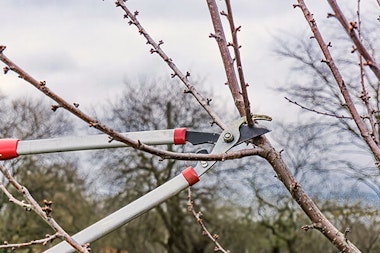 Be Inspired Blog - Arizona
Be Inspired Blog - Arizona

A Year in the Life of Deciduous Fruit Trees: Growing in the Valley of the Sun
The desert climate of our greater Metro Phoenix area might not seem like the ideal environment for deciduous fruit trees, but with the right care, you can cultivate a thriving orchard in your backyard. This guide takes you through a year in the life of deciduous fruit trees, covering everything from planting to ensuring robust growth and a delicious harvest in the Valley of the Sun.
 January: Dormancy and Planning
January: Dormancy and Planning
January is a time for preparation. Most deciduous fruit trees, including peaches, plums, apricots, and apples, are dormant during this period. Take the following steps:
- Choose Your Trees: Opt for varieties with low chill-hour requirements, such as Desert Gold peach or Anna apple, as these are well-suited for our mild winters.
- Site Selection: Pick a location with full sun and well-draining soil. Avoid areas prone to flooding or excessive shade.
- Prepare the Soil: Amend with organic compost to improve texture and fertility. Test soil pH, aiming for a slightly acidic to neutral range (6.0 to 7.0).
 February: Planting and Pruning
February: Planting and Pruning
February is the ideal month to plant new deciduous trees.
- Planting:
- Dig a hole twice as wide and as deep as the root ball.
- Place the tree so the graft union is above soil level.
- Backfill with a mix of native soil and compost, and water deeply.
- Pruning: Prune dormant trees to shape the canopy and remove any dead or crossing branches.
Check out our How-to Videos to learn more:
 March-April: Bloom and Pollination
March-April: Bloom and Pollination
As temperatures rise, trees begin to bloom.
- Watering: Transition to regular watering as the tree awakens, keeping soil moist but not waterlogged.
- Pollination: Encourage pollinators by planting companion flowers like marigolds or sunflowers. If pollinators are scarce, hand-pollinate using a small paintbrush.
- Fertilizing: Apply a balanced fertilizer to support spring growth and prepare your tree for summer.
 May-June: Fruit Development
May-June: Fruit Development
Fruit begins to set and grow during the heat of late spring.
- Thinning: Thin fruit to ensure larger, healthier produce. Leave 4-6 inches between fruits.
- Watering: Increase frequency to combat rising temperatures, ensuring deep hydration.
- Mulching: Apply a 2-4 inch layer of organic mulch around the base to conserve moisture and regulate soil temperature.
 July-August: Summer Heat Care
July-August: Summer Heat Care
Summers in the Valley are intense, which means your trees will need some extra TLC.
- Shade Protection: Use shade cloth to protect young trees from sunburn.
- Watering: Deep water 2-3 times per week. Avoid shallow watering, which promotes weak roots.
- Pest Management: Watch for aphids, scale, and spider mites. Use neem oil or insecticidal soap as needed.
 September-October: Harvest and Maintenance
September-October: Harvest and Maintenance
By fall, many fruits are ready to harvest.
- Harvesting: Pick fruit when it is fully ripe for the best flavor. Gently twist or cut fruit to avoid damaging the tree.
- Post-Harvest Pruning: Remove any damaged or diseased branches.
- Fertilizing: Apply a slow-release fertilizer to support root development over winter.
 November-December: Preparing for Dormancy
November-December: Preparing for Dormancy
As trees enter dormancy again, prepare for the next growing cycle.
- Cleanup: Remove fallen leaves and fruit to prevent pests and diseases.
- Dormant Sprays: Apply horticultural oil to control overwintering pests and diseases.
- Planning: Reflect on the past year and make adjustments for improved growth next season.
Additional Tips for Success
- Chill Hours: Research chill-hour requirements for your chosen trees and ensure they align with Phoenix’s average of 300-500 chill hours.
- Drip Irrigation: Install a drip irrigation system for consistent watering, especially crucial during the summer.
- Pest Control: Regularly inspect trees for signs of pests and diseases, treating issues promptly.
By following this seasonal guide, your deciduous fruit trees will thrive in the unique conditions of the Valley. With patience and care, you’ll enjoy the rewards of homegrown fruit year after year.


